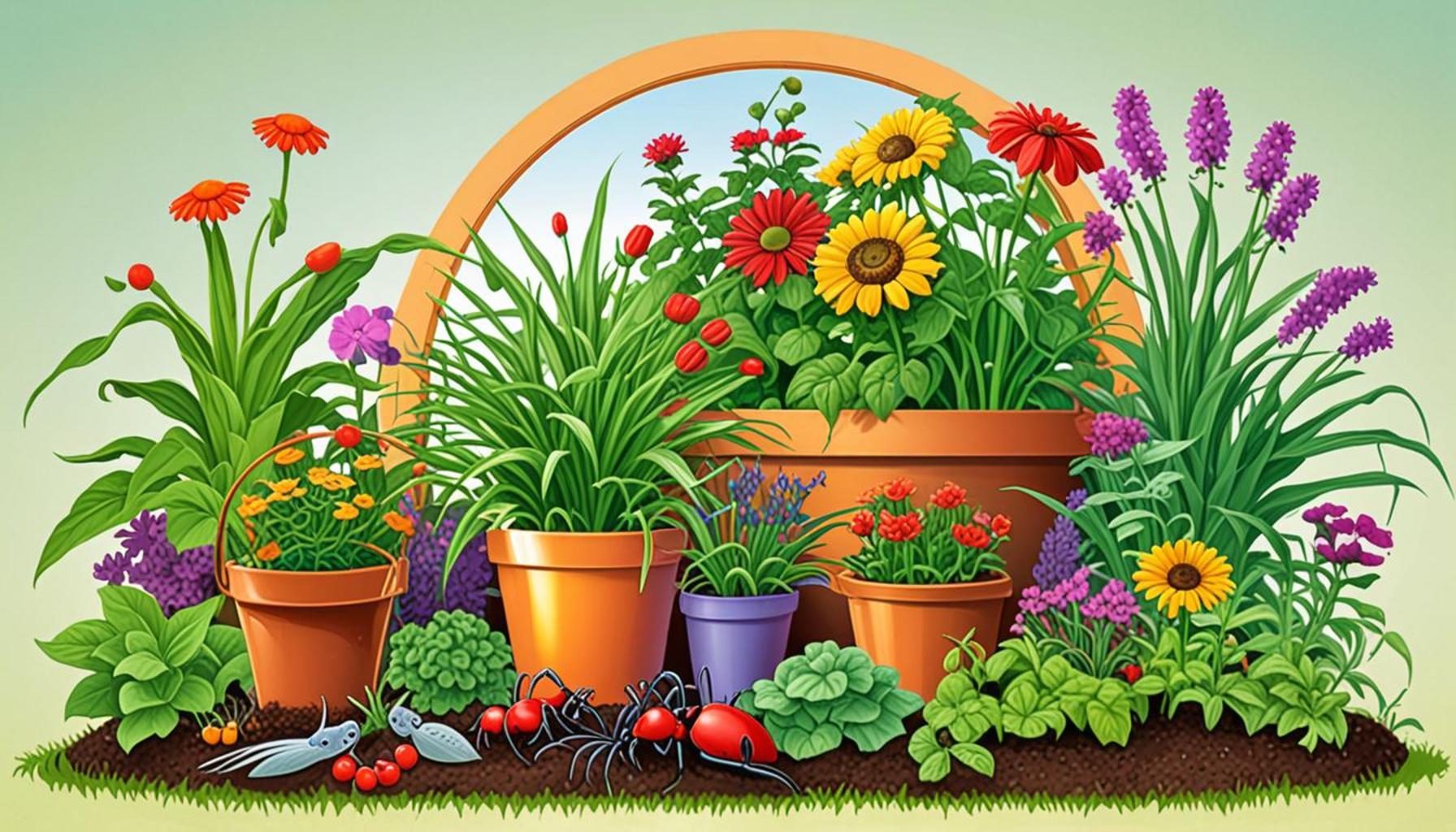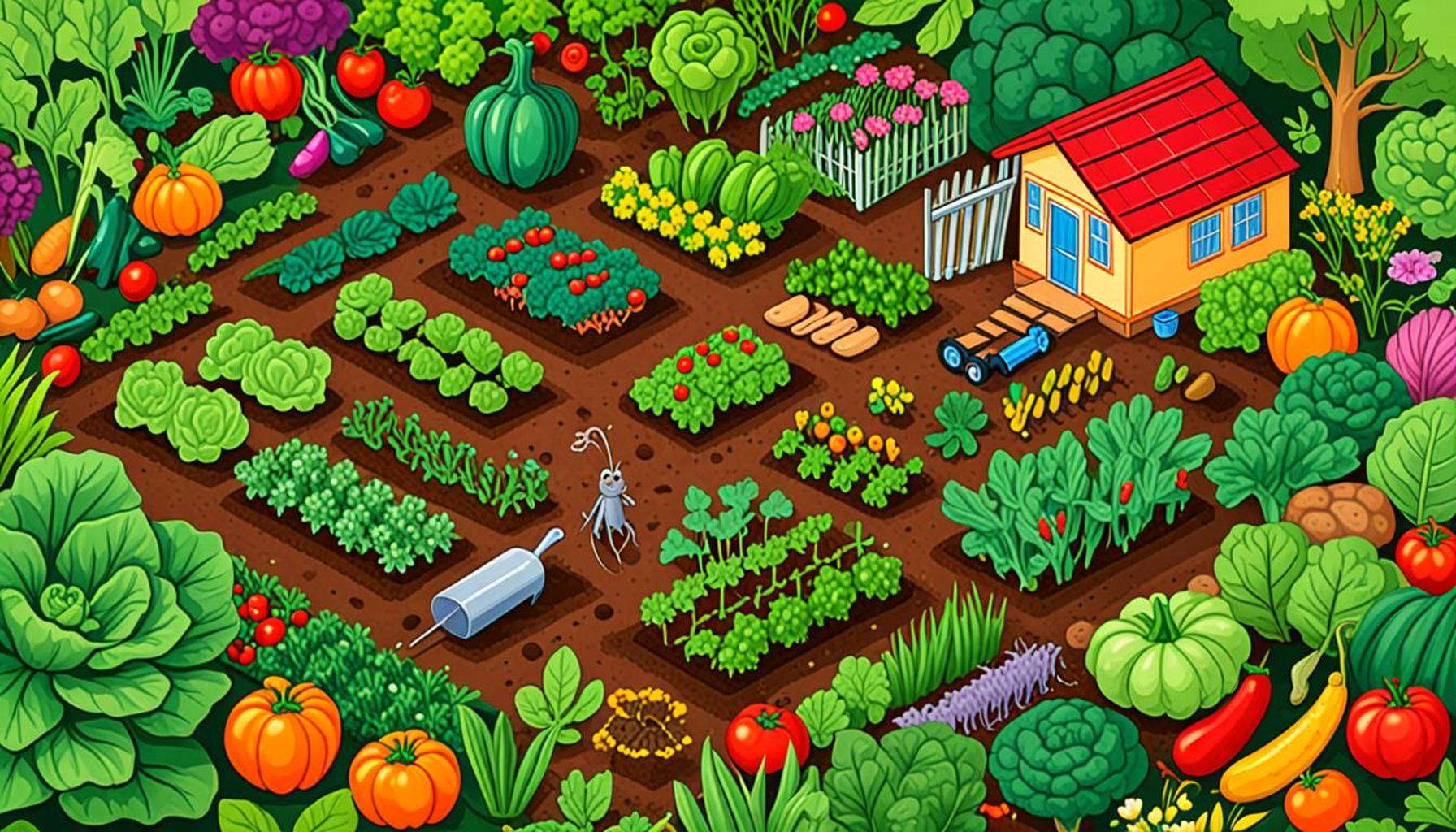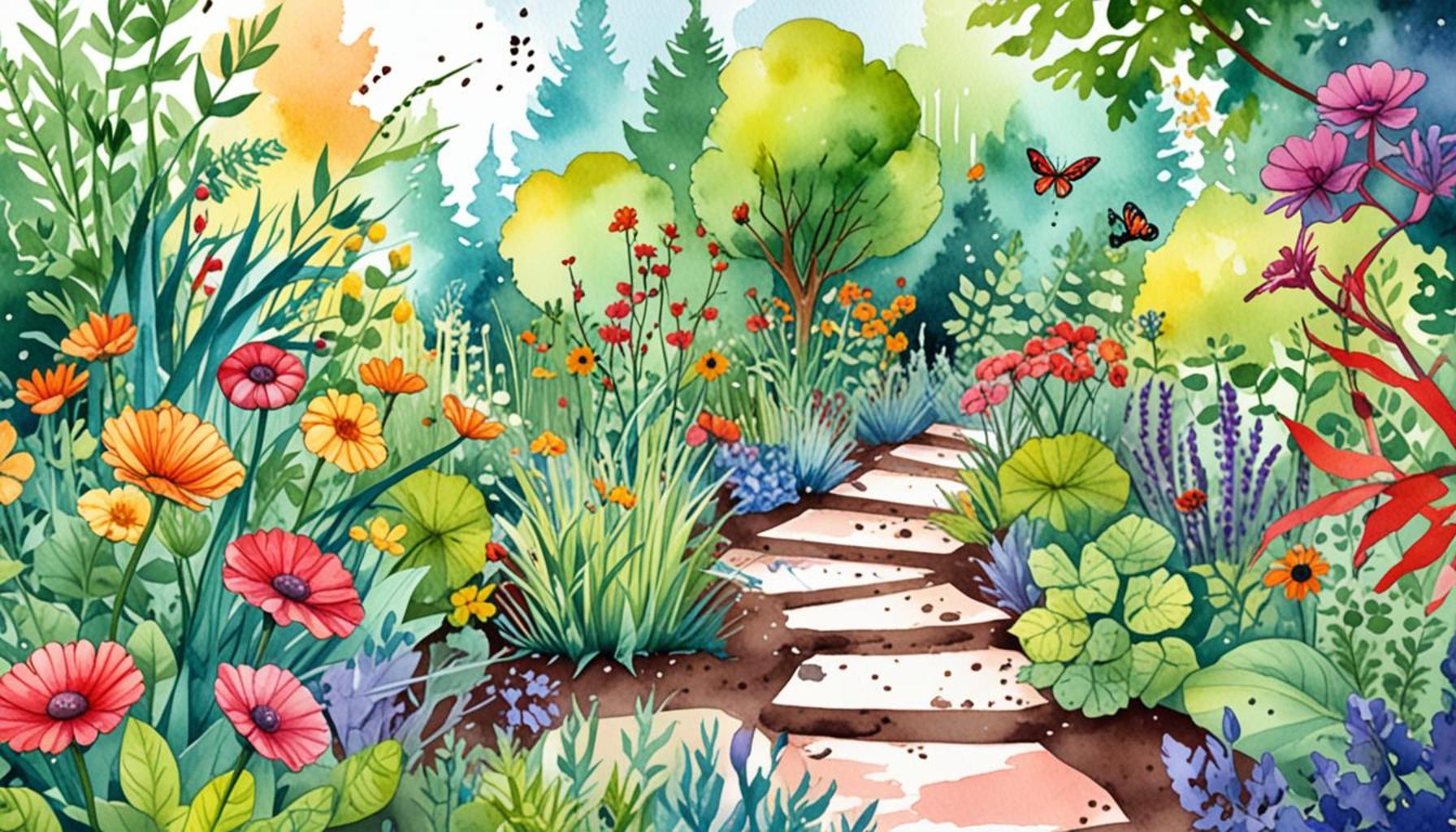Natural Pest Control Strategies for Home Gardens
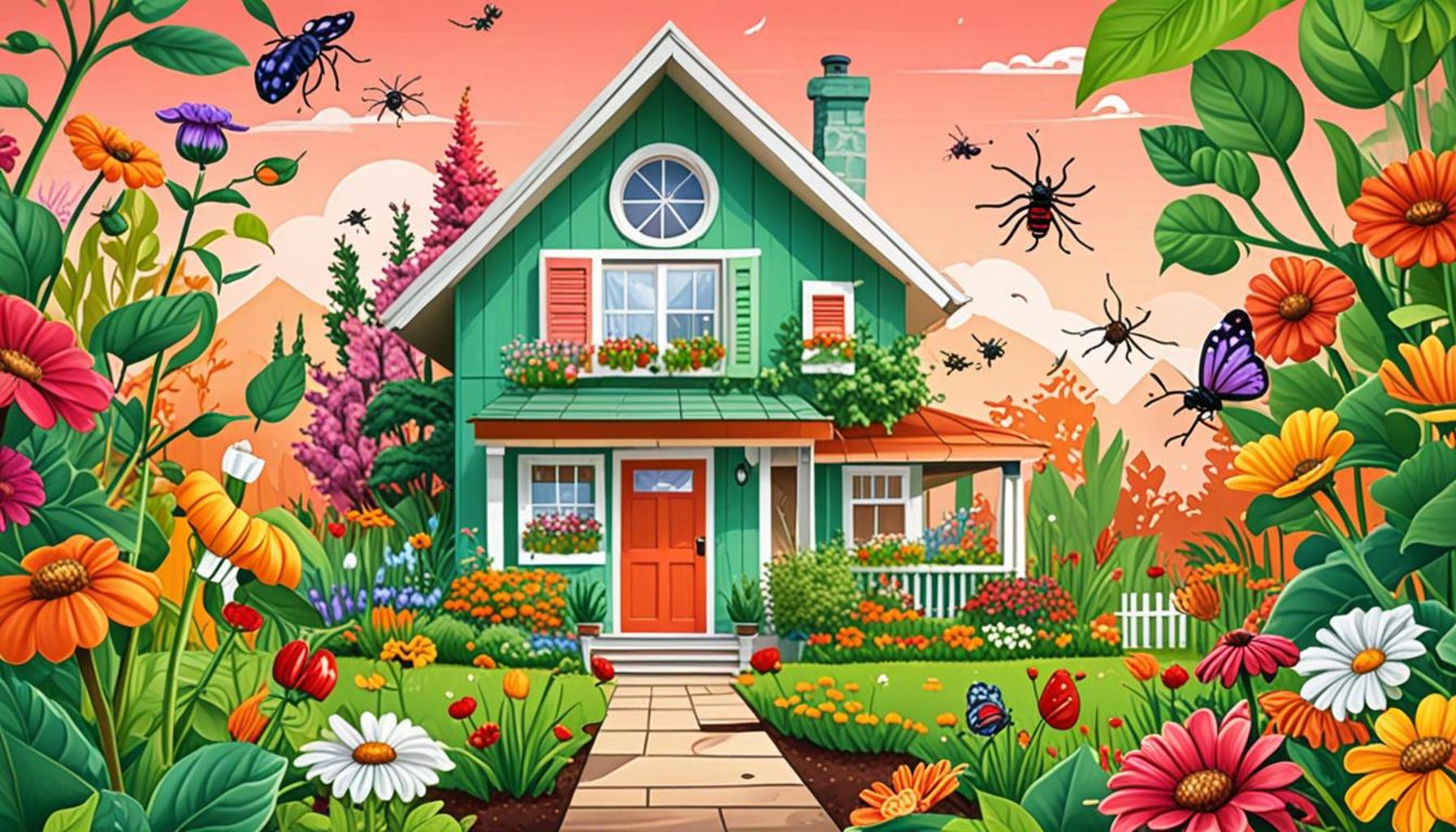
Explore the Power of Natural Pest Control
Home gardening is a rewarding endeavor that not only provides fresh produce but also deepens our connection to the environment. However, this delightful pursuit can bring its fair share of challenges, particularly when it comes to dealing with pests. With the growing concern regarding the impact of chemical pesticides on both health and the ecosystem, many gardeners are seeking natural pest control strategies that are both effective and eco-friendly.
Implementing these strategies not only helps in maintaining plant health but also promotes a thriving ecosystem. Natural pest control solutions foster biodiversity, create complex habitats, and enhance the resilience of your garden. Consider exploring the following methods:
- Companion Planting: This technique involves planting different crops in proximity for mutual benefit. For instance, marigolds can deter nematodes and aphids, while basil planted near tomatoes can enhance their growth and flavor. Additionally, certain plants attract beneficial insects; for instance, planting dill can draw in ladybugs, which feast on aphids.
- Biological Controls: To combat pests naturally, you can introduce their natural predators into your garden. Ladybugs and lacewings are excellent allies, as they voraciously consume aphids, spider mites, and whiteflies. More aggressive biological control options include the use of predatory nematodes to target soil-dwelling pests like grubs. The key is to create a balanced environment where these helpful insects can thrive.
- Homemade Remedies: A plethora of household items can be transformed into effective pest deterrents. For example, a simple soap solution (mix of mild soap and water) can suffocate soft-bodied insects while remaining safe for your plants. Garlic sprays, made from blended garlic and water, have been known to repel a wide range of pests due to their strong odor. Additionally, neem oil, derived from the seeds of the neem tree, not only disrupts the life cycle of pests but can also act as a fungicide.
By harnessing these natural pest control strategies, you can cultivate a flourishing garden that is as vibrant as it is sustainable. Understanding the interactions within your garden ecosystem enables you to make informed decisions that benefit both your plants and the environment.
As you dive deeper into these methods, consider documenting your findings and experiences. You may discover surprising interactions between plants and pests that further enhance your gardening journey. Engaging with natural pest control not only helps in cultivating robust plants, but it also allows you to contribute positively to the surrounding ecosystem, nurturing the natural processes that sustain life.
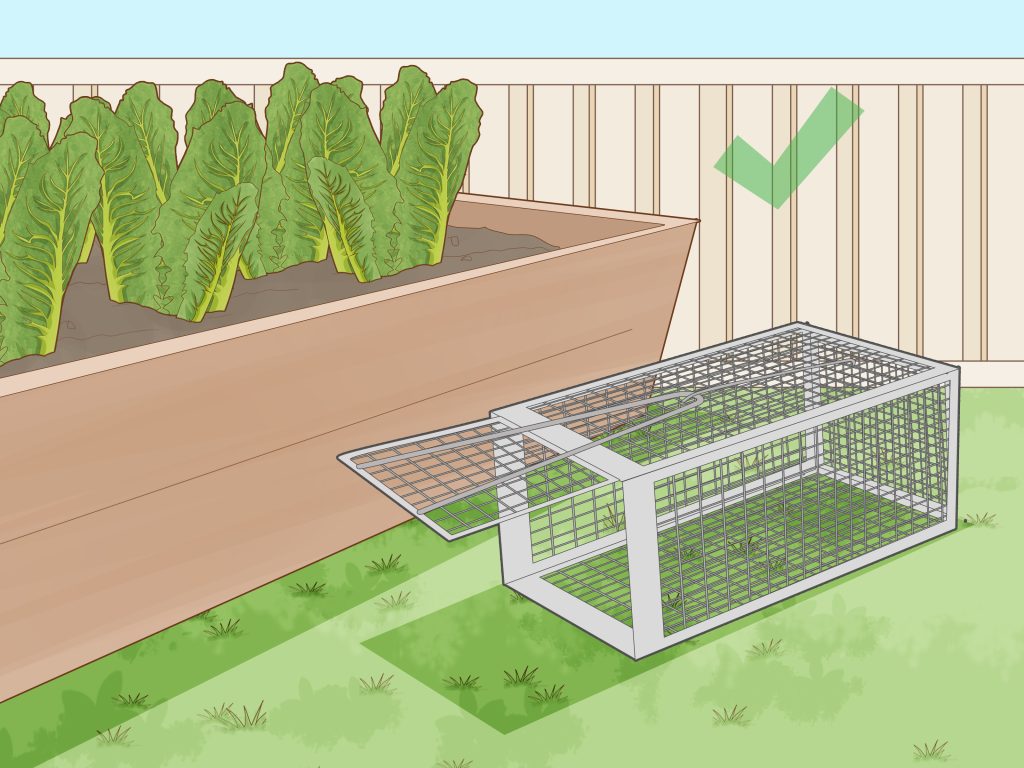
With the right knowledge at your fingertips, you will be well-equipped to tackle pest challenges head-on, ensuring a healthy and vibrant garden, all while minimizing your ecological footprint. The transformative power of natural pest control awaits you—become the steward of your own green haven!
DISCOVER MORE: Click here for expert harvesting techniques
Understanding the Fundamentals of Natural Pest Control
To embark on a journey of natural pest control, it is essential to understand the fundamentals of your garden ecosystem. Every garden is a unique blend of plants, insects, and microorganisms, all interacting in ways that can both benefit and challenge your gardening efforts. The key to successful natural pest control lies in embracing this complexity and using it to your advantage.
Observing Your Garden is the first step toward effective natural pest control. Take the time to notice the types of pests that invade your plants, as well as the beneficial insects that might already inhabit your garden. Understanding the life cycle of each pest allows you to time your interventions effectively, making it easier to reduce their populations without disrupting the beneficial species. For example, recognizing the distinct life stages of aphids can help you identify when they are most vulnerable, allowing you to take appropriate action when they first appear.
One of the most effective strategies for natural pest control is the use of physical barriers. This includes using row covers, insect netting, or even homemade traps to protect your plants. Row covers can shield young seedlings from pests such as cutworms and cabbage moths, while awaiting their emergence. At the same time, sticky traps can catch flying pests like whiteflies and fungus gnats, providing a visual cue of pest levels and allowing you to assess the effectiveness of your control methods.
In addition to preventive measures, enhancing the biodiversity in your garden can significantly reduce pest problems. Growing a variety of plants—herbs, flowers, and vegetables—all in the same space attracts a range of predatory and parasitic insects. For example, a diverse garden can promote the presence of spiders, hoverflies, and parasitic wasps, which prey on common pests like aphids and caterpillars. To maximize this effect, consider integrating the following plants:
- Yarrow: Attracts beneficial insects and helps improve soil fertility.
- Fennel: Acts as a nectar source for pollinators and attracts predatory wasps.
- Garlic: Known for its pest-repelling properties, it can deter aphids and spider mites.
- Sunflowers: Draws in pollinators and predatory insects while acting as a natural trap for certain pests.
Moreover, maintaining plant health through cultural practices can significantly reduce pest pressure. Ensure your plants receive adequate water and nutrients, as stressed or weak plants are more susceptible to infestations. Crop rotation is another crucial aspect; it prevents pest populations from becoming established by changing the crops in specific locations each season. This practice disrupts the life cycles of pests and diseases that tend to thrive on specific plants.
By mastering these foundational aspects of natural pest control, gardeners can cultivate a thriving ecosystem that naturally regulates pest populations while promoting healthy plant growth. With patience and attention, you will discover the beauty of a balanced garden that leverages nature’s power to combat the challenges posed by pests.
| Category | Advantages |
|---|---|
| Interplanting | Enhances biodiversity, deterring pests naturally by creating a habitat where natural predators thrive. |
| Beneficial Insects | Encourages pest control through the presence of ladybugs and lacewings, which feed on pest larvae and aphids. |
| Natural Repellents | Utilizes natural oils and extracts, such as neem oil, to create an unfavorable environment for pests. |
| Crop Rotation | Prevents soil depletion and disrupts the life cycles of pests by changing the means of pest access and food source. |
The integration of natural pest control strategies transforms home gardens into a thriving ecosystem. Interplanting not only adds visual appeal but also promotes biodiversity, rend the garden less hospitable to invasive pests. By attracting beneficial insects, such as ladybugs, gardeners create a natural balance where these allies tackle pest problems without the need for chemical inputs. Utilizing natural repellents can efficiently deter common pests without harming beneficial species. Furthermore, crop rotation invigorates soil health while concurrently disorienting pests dependent on specific plants, facilitating an organic approach to maintaining a healthy garden. Incorporating these strategies into your gardening routine not only enhances plant health but also nurtures the environment, making home gardening a more sustainable and enjoyable endeavor. Engaging with these natural methods opens an avenue for deeper exploration into sustainable gardening practices that are mutually beneficial to both humans and the ecological system surrounding them.
DIVE DEEPER: Click here to discover the secrets of selective harvesting
Utilizing Natural Predators and Organic Solutions
Once you’ve laid the groundwork for natural pest control, the next pivotal step involves actively utilizing natural predators to manage pest populations. Encouraging beneficial insects can transform your garden into a thriving ecosystem where nature regulates itself. Two of the most noteworthy allies are ladybugs and lacewings, both voracious predators of aphids. By creating a habitat that attracts these insects—such as planting alyssum and dill—you can enhance your garden’s defenses against common pests.
Additionally, birds serve as formidable allies in your war against pests. A well-placed birdhouse or feeder can invite insect-eating birds, such as wrens and chickadees, to take up residence in your garden. These feathered friends actively hunt down caterpillars, slugs, and various pests, providing a natural form of pest management. When adding birdhouses, ensure they are built to accommodate the species native to your area, ensuring a higher chance of occupancy and effective pest control.
Alongside harnessing predators, consider integrating organic solutions that are safe for humans, pets, and the environment. Homemade insecticidal soaps, crafted from simple ingredients like liquid soap and water, can offer relief against soft-bodied pests. When sprayed directly on pests like aphids or spider mites, these soaps disrupt their outer membranes, ultimately leading to their demise. Another useful solution is a mixture of water infused with neem oil, derived from the seeds of the neem tree, which acts as a natural repellent and disrupts pest life cycles when applied to the foliage.
Companion Planting: A Time-Tested Technique
Companion planting is a traditional technique that involves growing mutually beneficial plants close to one another. This strategy can substantially enhance natural pest control outcomes. For instance, planting marigolds alongside vegetables can deter nematodes and various insects with their strong scent. Similarly, the combination of basil with tomatoes not only enhances flavor but also repels whiteflies and aphids. Understanding these relationships allows gardeners to create synergistic combinations that promote growth while reducing pest issues.
Moreover, incorporating trap crops is another effective tactic. These are plants that attract pests away from your primary crops. For example, if you’re growing squash, planting a few cantaloupe plants nearby can lure squash bugs. This strategy helps you manage pest populations more effectively: simply remove the trap crops once they are infested, minimizing the risk to your main plants.
Regular Monitoring and Maintenance
While implementing these natural pest control strategies, regular monitoring of your garden’s health is crucial. Keeping an eye out for changes in pest activity or plant health allows for timely interventions. Periodically inspect both the plant foliage and the soil for early signs of infestation or disease. Remember, integrated pest management (IPM) is about creating a balance; it’s crucial to identify when to step in rather than allowing any single pest species to dominate your ecosystem.
Incorporating a calendar for regular garden assessments can help you stay on top of pest activity. Documenting your observations will not only aid in identifying patterns but will also serve as valuable data for future growing seasons. By combining vigilance with natural strategies, gardening enthusiasts can foster an environment that thrives without the over-reliance on chemical pesticides.
LEARN MORE: Click here to enhance your watering skills
Conclusion: Embracing Nature for a Healthier Garden
Natural pest control strategies are not just eco-friendly alternatives; they are essential components of a sustainable garden ecosystem. By integrating practices such as companion planting, utilizing natural predators, and applying organic solutions, home gardeners can effectively manage pests while promoting biodiversity. This holistic approach not only safeguards our produce but also nurtures the environment, providing habitats for insects and wildlife that play crucial roles in pollination and soil health.
Moreover, the practice of regular monitoring cannot be overlooked. Active engagement with your garden allows for early detection of pest issues, facilitating timely interventions while maintaining the delicate balance of your ecosystem. Keeping records of pest activity not only enhances your gardening acumen but also contributes to a broader understanding of pest cycles, which can inform strategies for future seasons.
As you embark on your journey toward natural pest management, consider that each garden offers unique challenges and opportunities. By exploring various natural pest control strategies, you can customize your approach to suit your local conditions and specific pest problems. Embrace these methods to cultivate not only healthier plants but also a deeper connection with nature. In doing so, your garden will flourish, proving that the best pest management may very well lie in the natural order of things.
